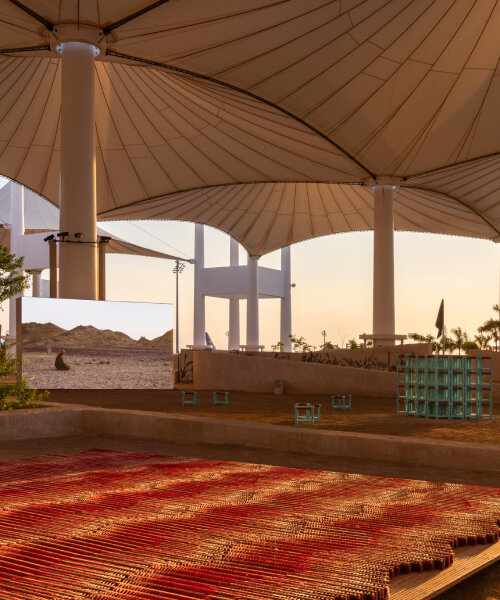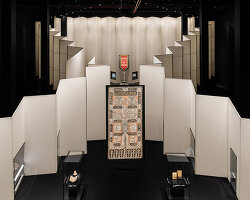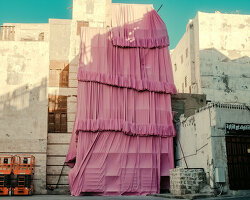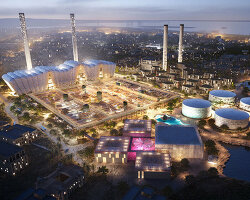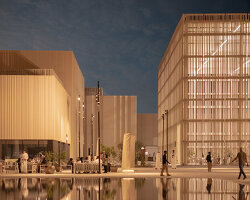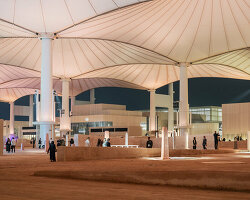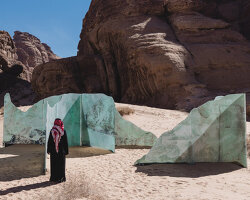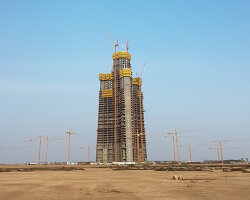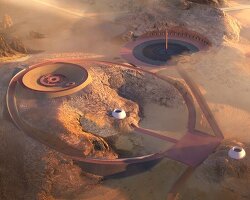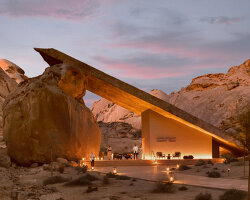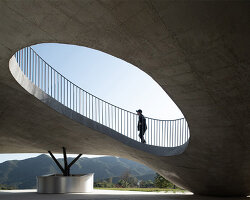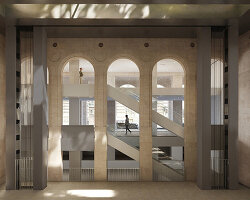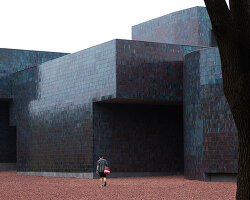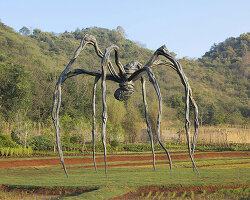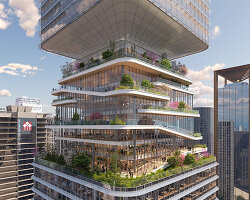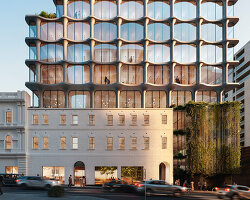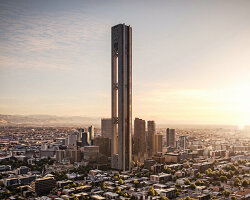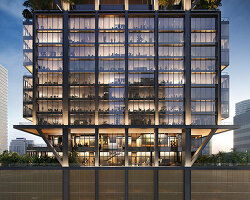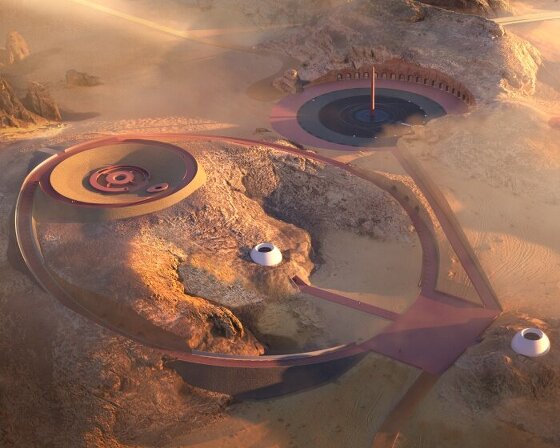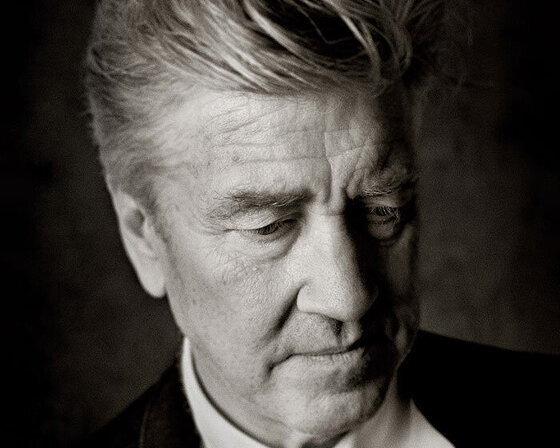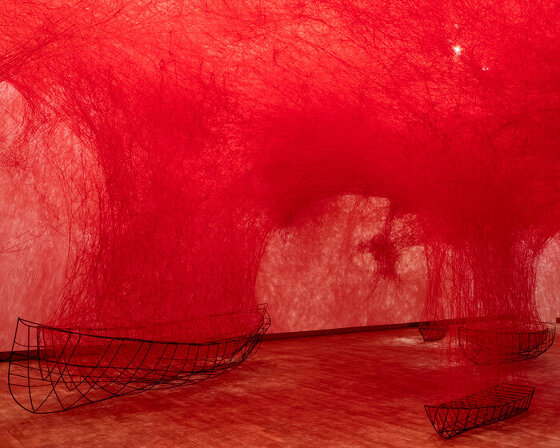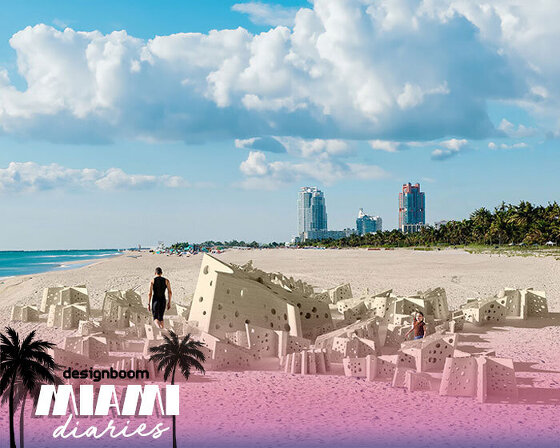second islamic arts biennale reflects on expressions of faith
The Islamic Arts Biennale returns to Jeddah, Saudi Arabia, with over 500 historical artifacts and contemporary artworks illustrating the richness and vastness of Islamic culture. Themed ‘And All That Is In Between’, a verse that appears 20 times in the Quran, the biennale celebrates the wonders of divine creation and examines how mankind has continually engaged with its spiritual and physical manifestations from antiquity to today. Beneath the Western Hajj Terminal’s iconic canopies, the AlMidhallah section hosts around 20 site-responsive commissions unified by the idea of the Islamic Charbagh — the Indo-Persian garden divided into four by intersecting water channels — as a site of expanded imagination. ‘The manifestation of the Charbagh here is as a garden of concepts. Your presence becomes the flow of water that irrigates these different thematic quadrants,’ Muhannad Shono, Curator of Contemporary Art, tells designboom.
The space is entered through singular gateways and pathways.‘These unfold into installations that are addressing knowledge, understanding, and collaboration with the non-human,’ Shono continues. ‘And then, we share in the collective spaces, followed by moments of rejuvenation and healing.’ Fatma Abdulhadi sets the tone by creating a path to healing engulfed in scents of paradise, as Takashi Kuribayashi brings the heavens closer to the earth. Ahead Tamara Kalo revisits discoveries of the Islamic Golden Age, while Anhar Salem interrogates the digital reimagining of Islamic symbols. In the final quadrants, highlighting humanity’s entwinement with nature, history, and one another, Nasser Alzayani mourns ecological loss as Imran Qureshi weaves a serene oasis between two sacred cities.
The location of the biennale itself, designed by SOM in the 1980s as a shaded Bedouin village, amplifies the diversity of these cross-cultural dialogues in pursuit of the spiritual. It is perhaps the most prominent symbol of journey, ritual, and congregation — a gateway to Islam that receives millions of pilgrims each year. It becomes a fitting stage for reflecting on how experiences and expressions of faith have evolved across Muslim civilizations, and how they continue to define their identity in relation to contemporary social and environmental matters. The biennale runs until May 25th, 2025.
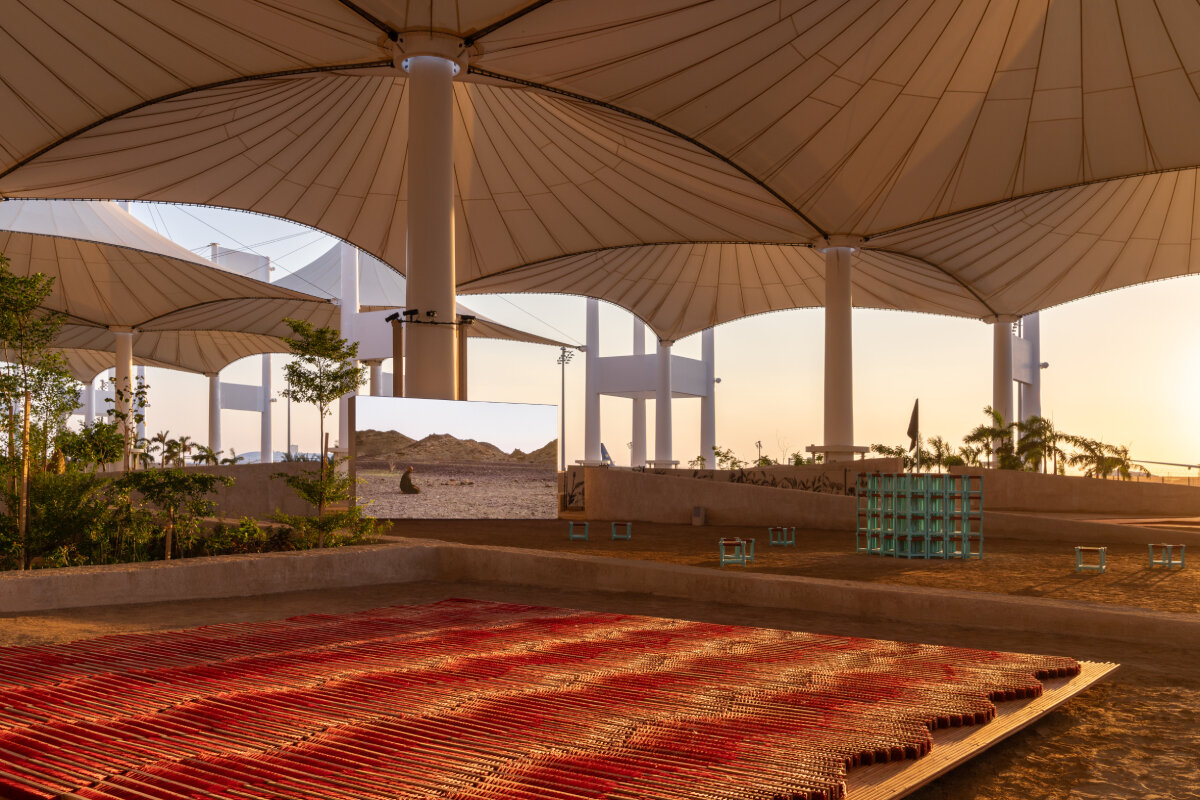
AlMidhallah at Islamic Arts Biennale | image by Marco Cappelletti, courtesy of the Diriyah Biennale Foundation
a singular and collective gateway into ‘a garden of concepts’
The journey begins with works that symbolize crossing physical and metaphysical thresholds into spaces of transformation. Fatma Abdulhadi’s I Wish You in Heaven is a surreal passageway celebrating life while mourning the deceased. Integrating an olfactory element, Abdulhadi explores the idea of family heirlooms and the Quranic significance of plants, suspending translucent tapestries marked with ghostly imprints of basil leaves. ‘My mother used to tell me that in the Quran, it says that basil is the scent of Jannah (paradise),’ the artist tells designboom.
This notion of a path to healing is explored as a collective ritual in Bilal Allaf’s video, What I Heard in the Valley. Sa’y, the journey between Safa and Marwa (performed annually by millions of Hajj pilgrims), is reimagined as a meditation on striving and surrender. During our tour, curator Muhannad Shono describes the Saudi artist’s relentless, 24 hours of pacing as ‘an act of affirmation of life’ — an introspective parallel to humanity’s path to the hereafter.
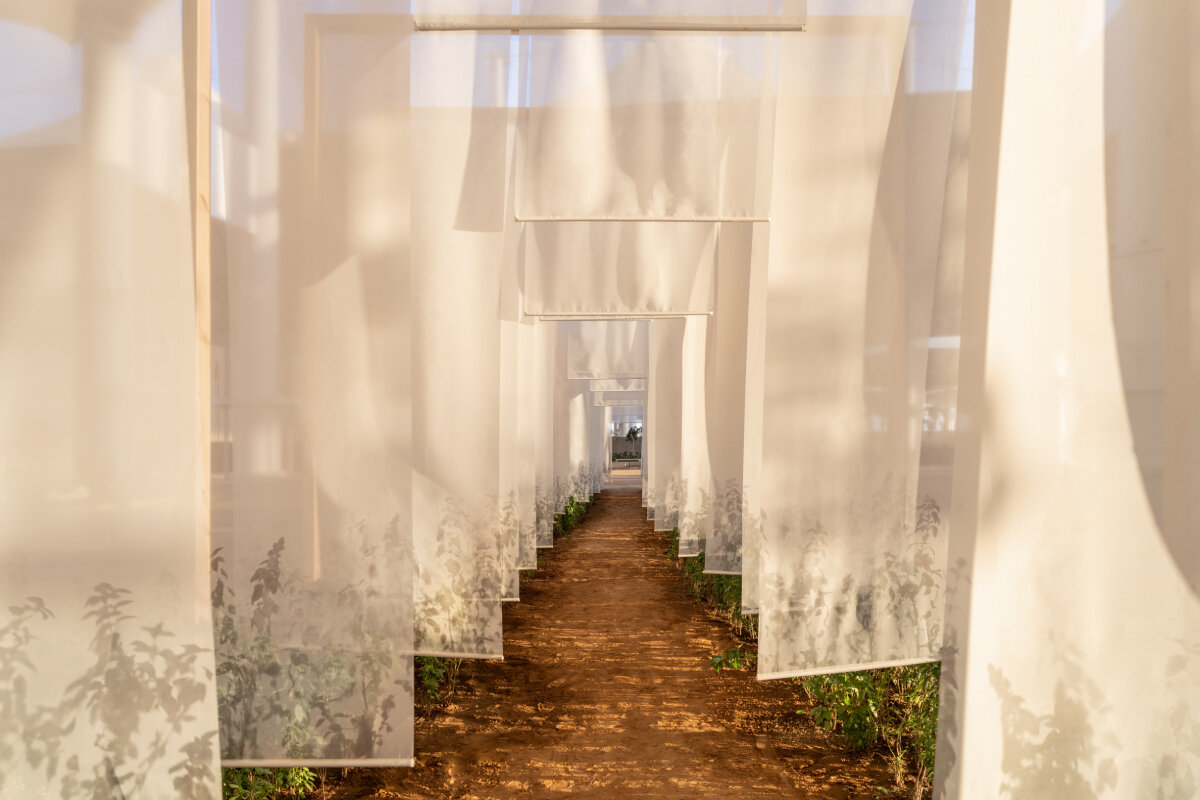
I Wish You in Heaven by Fatma Abdulhadi | image by Marco Cappelletti, courtesy of the Diriyah Biennale Foundation
ancient knowledge and questioning rituals in the digital age
‘The garden is a place of understanding; we learn from nature,’ says Amin Jaffer as he reflects on AlMidhallah’s second concept. Honoring the historic Islamic civilizations’ quests for knowledge, the garden installations engage with cultural histories, ecological issues, and ancestral knowhow to address contemporary concerns. With an interactive element, Tamara Kalo looks to the scientific and technological investigations of the Islamic Golden Age with Optics of a Rising Sun. Her copper structure reinterprets Ibn al Haytham’s camera obscura, while speaking to a Quranic verse (Al-Nur) on the presence of light. Two camera lenses point eastward where the sun rises, and westward, where it sets, with the point in between allowing visitors to view their surroundings in reverse.
For Anhar Salem, it becomes about examining digital representation as a Muslim today. Her work Media Fountain investigates how globalization, capitalism, and mass media reshape religious rituals and symbols across the world. ‘She has tapped into her community to online to help her source and archive anonymous profile avatars on these mosaics,’ Muhannad Shono tells designboom. Its water tap, when activated, projects a cascade of AI-generated Islamic imagery onto a visitor’s palm.
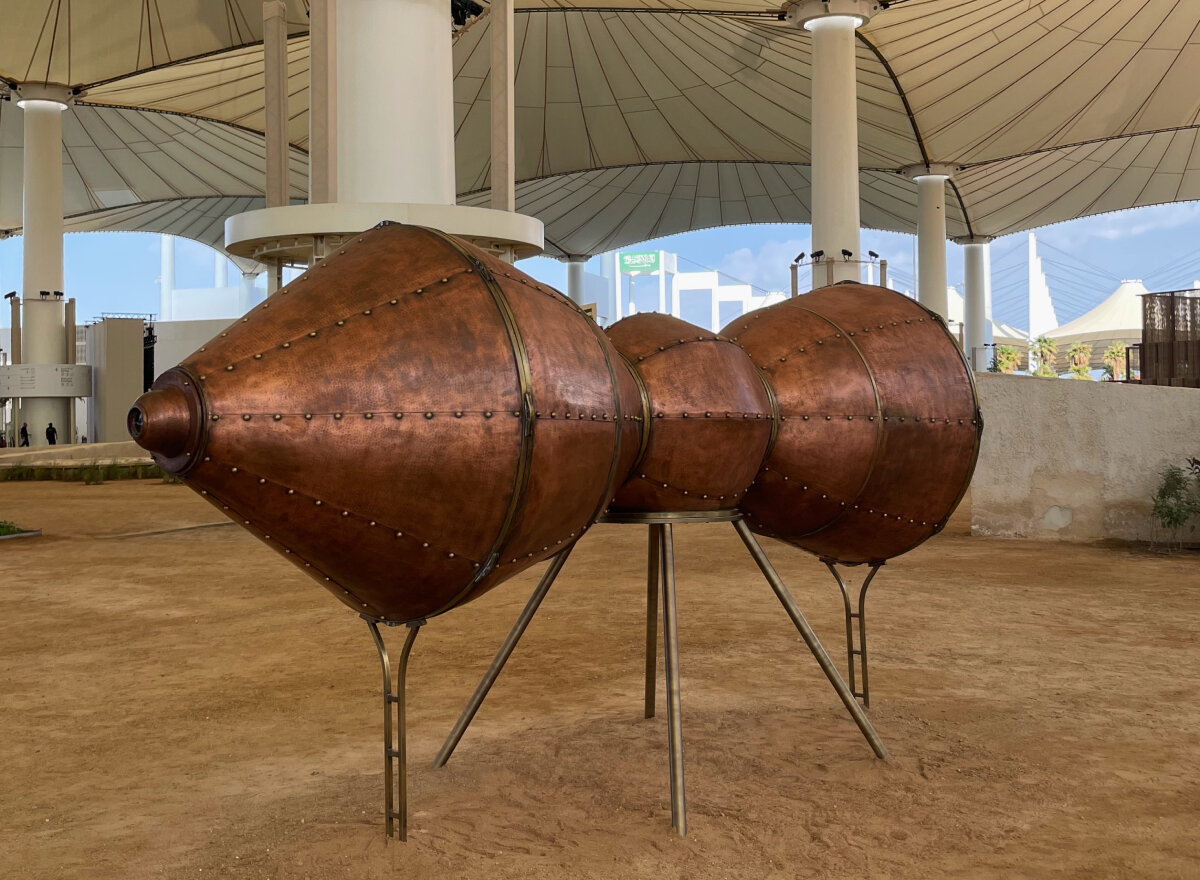
Optics of a Rising Sun by Tamara Kalo | image © designboom
Louis Guillaume’s interpretation of the biennale theme, meanwhile, looks to the non-human agents of Islamic gardens. ‘For me, what is in between the sky and the earth is the sun and the wind,’ the artist tells us. The sun-shaped When We Welcomed the Wind reimagines the mashrabiya — a traditional architectural element regulating light and wind flow — as a living organism. Its cellular composition is woven from seeds, recalling the mashrabiya’s geometries while alluding to drought brought on by the climate crisis. At the same time evoking vitality in the face of the perishing, it unintentionally, and delightfully, becomes a large bird shelter under the terminal canopies. Ala Younis’ Cut Flowers too looks to the history of the natural, the flora of Gaza, as the artist creates a greenhouse contemplating flowers’ ability to retain despite the short natural cycles of their physical lives.
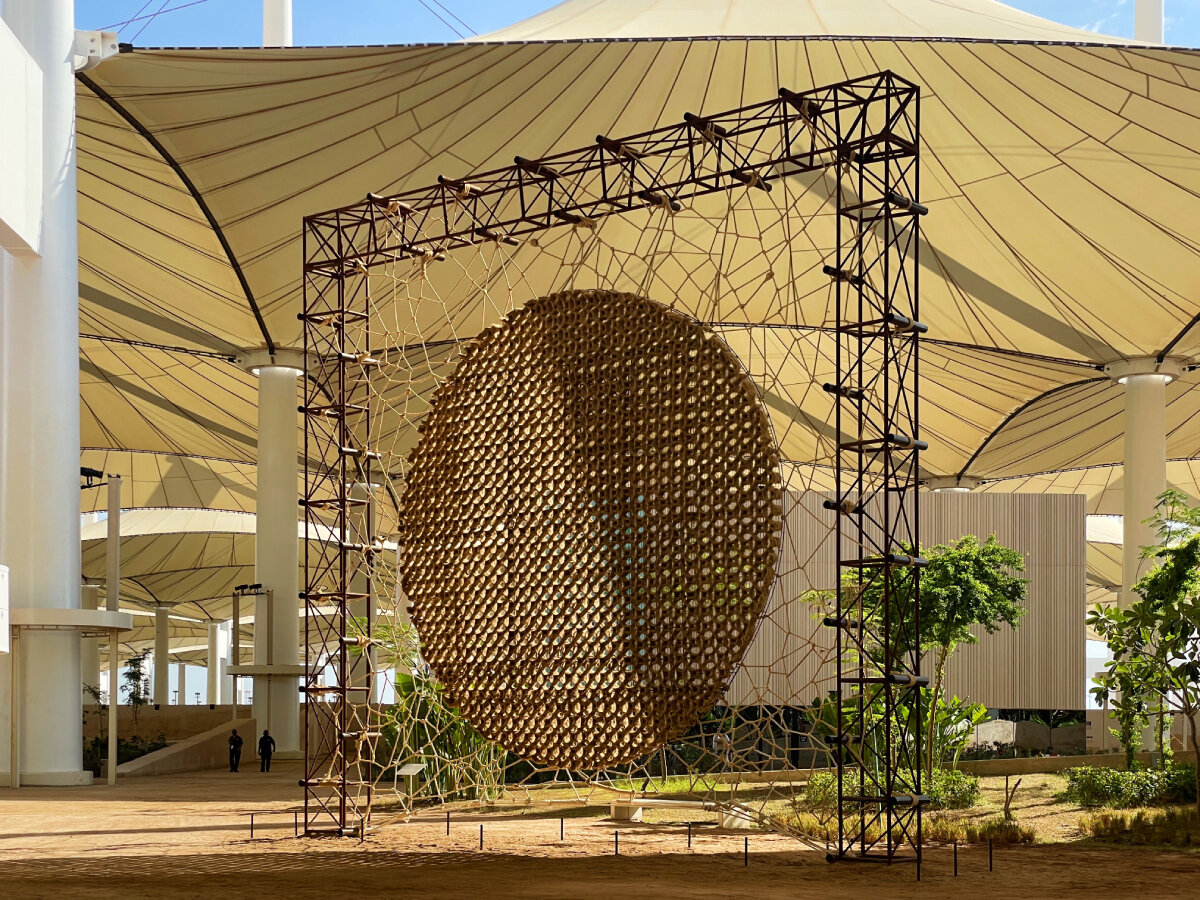
When We Welcomed the Wind by Louis Guillaume | image © designboom
the garden as a space for Contemplation and rejuvenation
Amin Jaffer holds that the garden, a place of nature and beauty, is one of contemplation and rejuvenation. ‘Though,’ he recognizes,‘we live in an age of environmental, and cultural, crises.’ The works in this third section thus evoke meditation as well as dichotomies of destruction and regeneration. In Watering the distant, deserting the near, Nasser Alzayani honors Bahrain’s natural springs that have dried up due to human exploitation and climate change. Inspired by ancient cuneiform tablets, he inscribes an eroding poem mourning the fate of the springs into sand, imagining the land itself as a storyteller. ‘The work is about care, about questioning ideas of heritage and erasure,’ the artist shares during a panel discussion at the opening.
In Sleepers of the Cave, Iqra Tanveer and Ehsan Ul Haq too explore the elasticity of time and the urgency of global ecological realities. Drawing from the Quranic parable in chapter Al-Kahf, the artists render this miraculous awakening to the advent of a new age with imagery of fertility and resurrection, ambiguous clay creatures, and a rippling water well. The artists leave us reflecting with a sense of hope, amplified by the holy setting near Makkah. ‘There is an apocalyptical alarm, but it is also a paradigm shift… Every end is a beginning,’ the duo tells designboom.
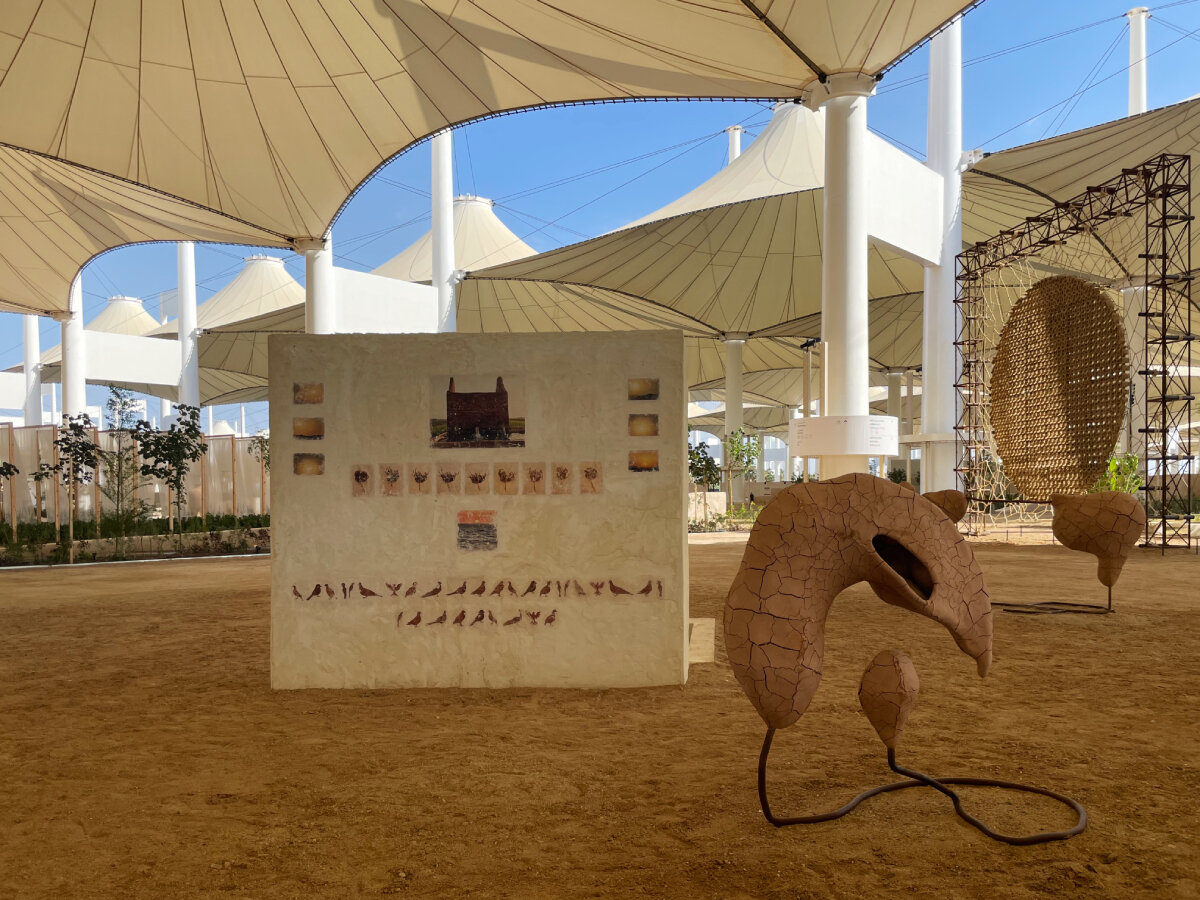
Sleepers of the Cave by Iqra Tanveer and Ehsaan Ul Haq | image © designboom
Congregation and community for cultural exchange
Historically, the Islamic garden has been a place of congregation, and the installations within this final section reflect its role in continuing to articulate shared, communal experiences in contemporary societies. ‘The garden is where our relationships are formed, made, and bound,’ Amin Jaffer reflects during his talk. Imran Qureshi’s Between Sacred Cities (Zubaydah Trail) and Osman Yousefzada’s Arrivals create spaces for exactly this. Yousefzada composes a communal cube of stools that can be stacked, deconstructed, taken away, and reassembled as per the wishes of the visitor. Qureshi, meanwhile, taps into his training as a miniature painter — a historic art form in which the garden itself is a prevalent motif.
The Pakistani artist realizes a tranquil oasis of waterways dividing verdant quadrants where visitors to the biennale can wander, gather, or lay down on the expansive charpai — a sprawling iteration of the traditional bed from rural South Asia, woven using artisanal techniques also employed by Yousefzada. ‘In this age of technology, there is a segregation between these traditional crafts,’ the artist tells designboom as he reflects on the contribution of the artisans who helped him to weave his work. ‘It’s important to preserve them, but also to consider how they can take new shape.’ Similarly, Asim Waqif’s collaborative sonic installation revitalizes vernacular forms and crafts to address concerns about their future, endangered by contemporary technologies. With Min Rukam, he assembles bamboo harvested in India into an immersive cocoon, braided with traditional basketry techniques on an architectural scale. Interactive, the work invites all to step over the bamboo and tap the walls to together generate an improvised yet intentional soundscape.
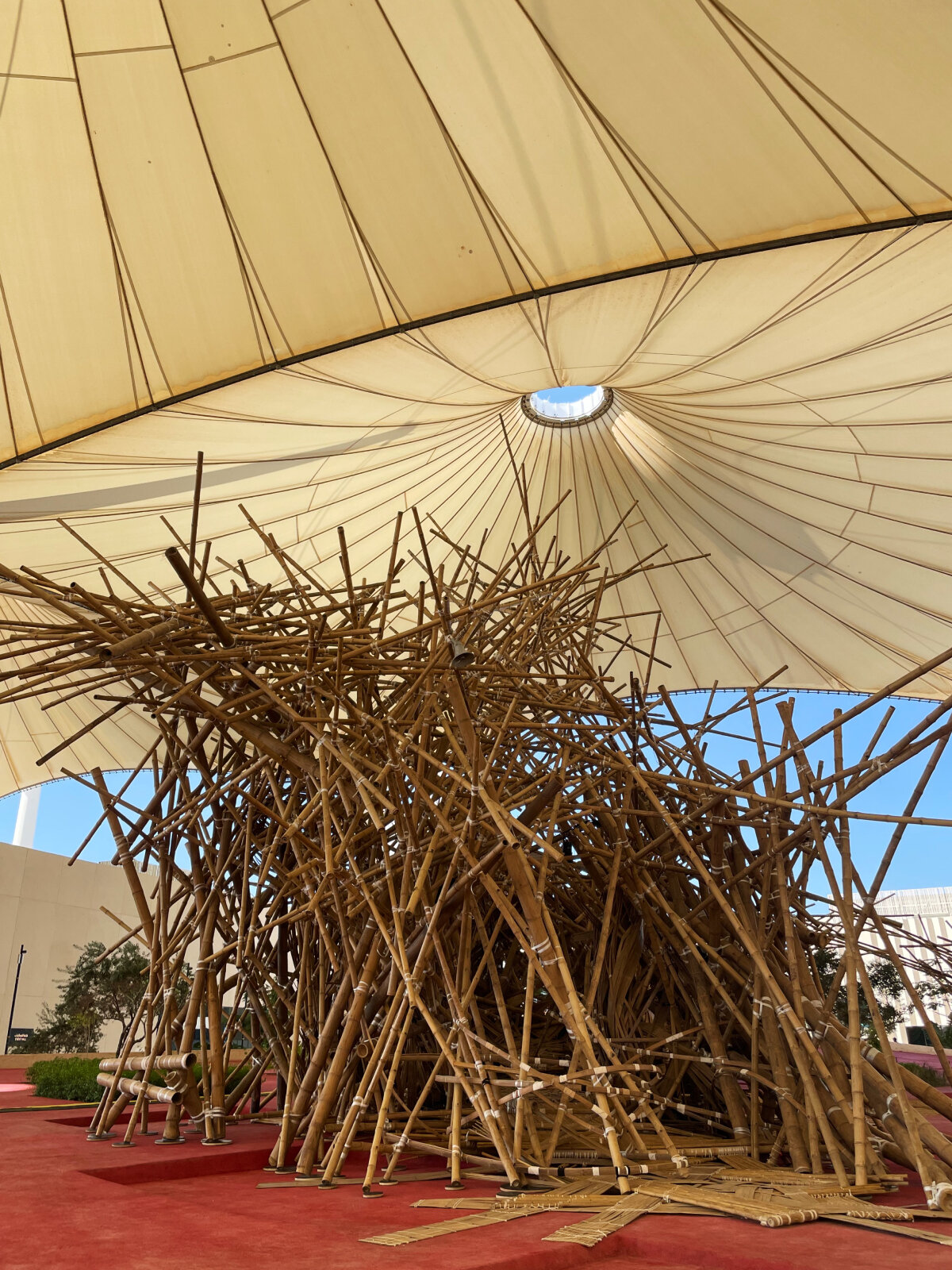
Min Rukam by Asim Waqif | image © designboom
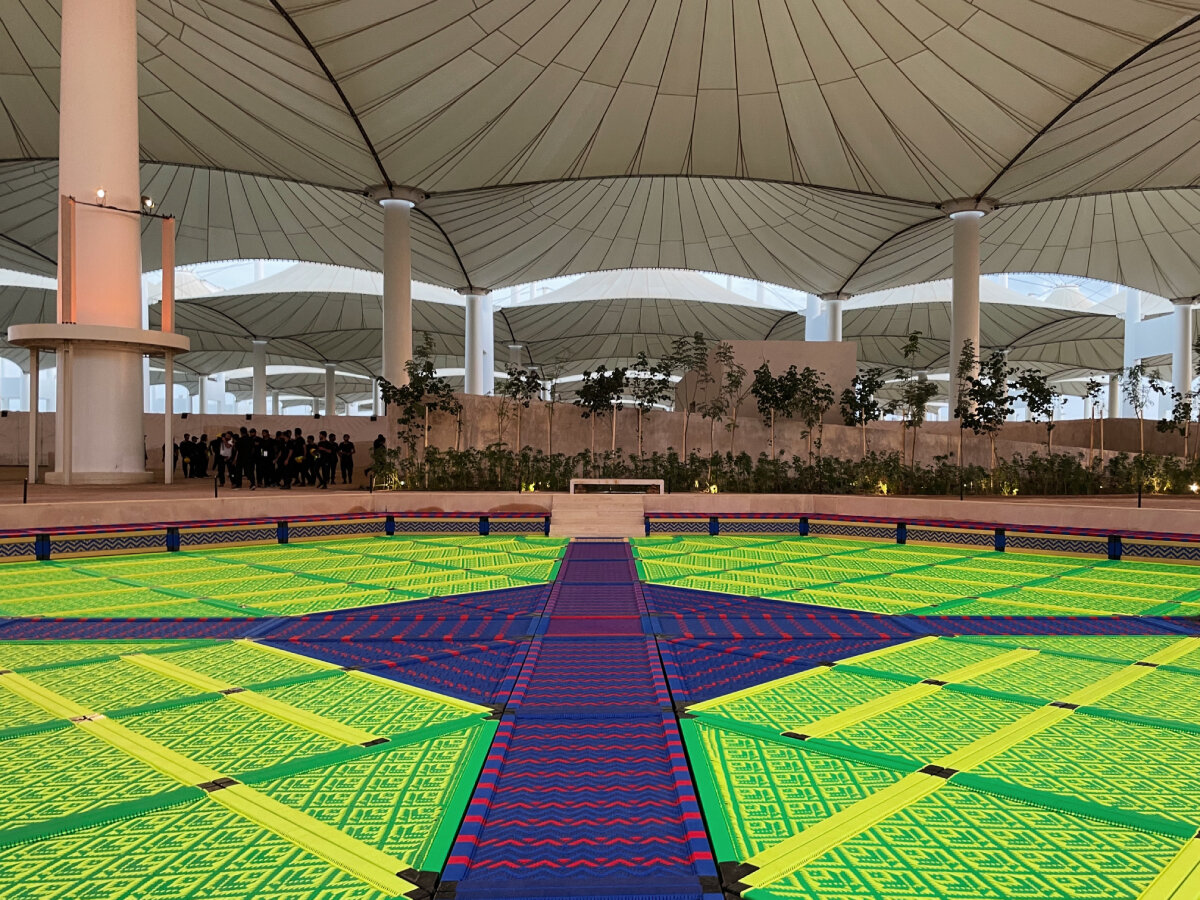
In Between Sacred Cities (Zubaydah Trail) by Imran Qureshi | image © designboom
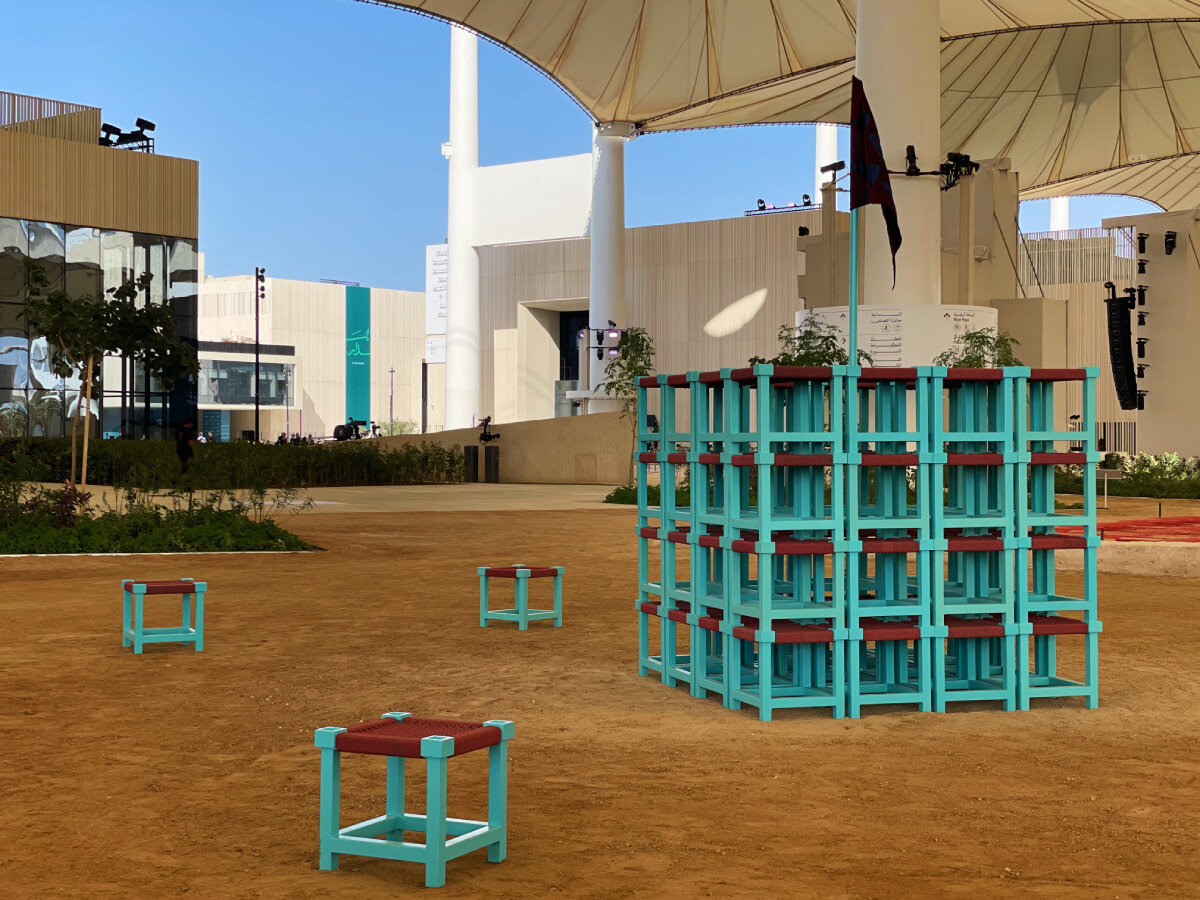
Arrivals by Osman Yousefzada | image © designboom
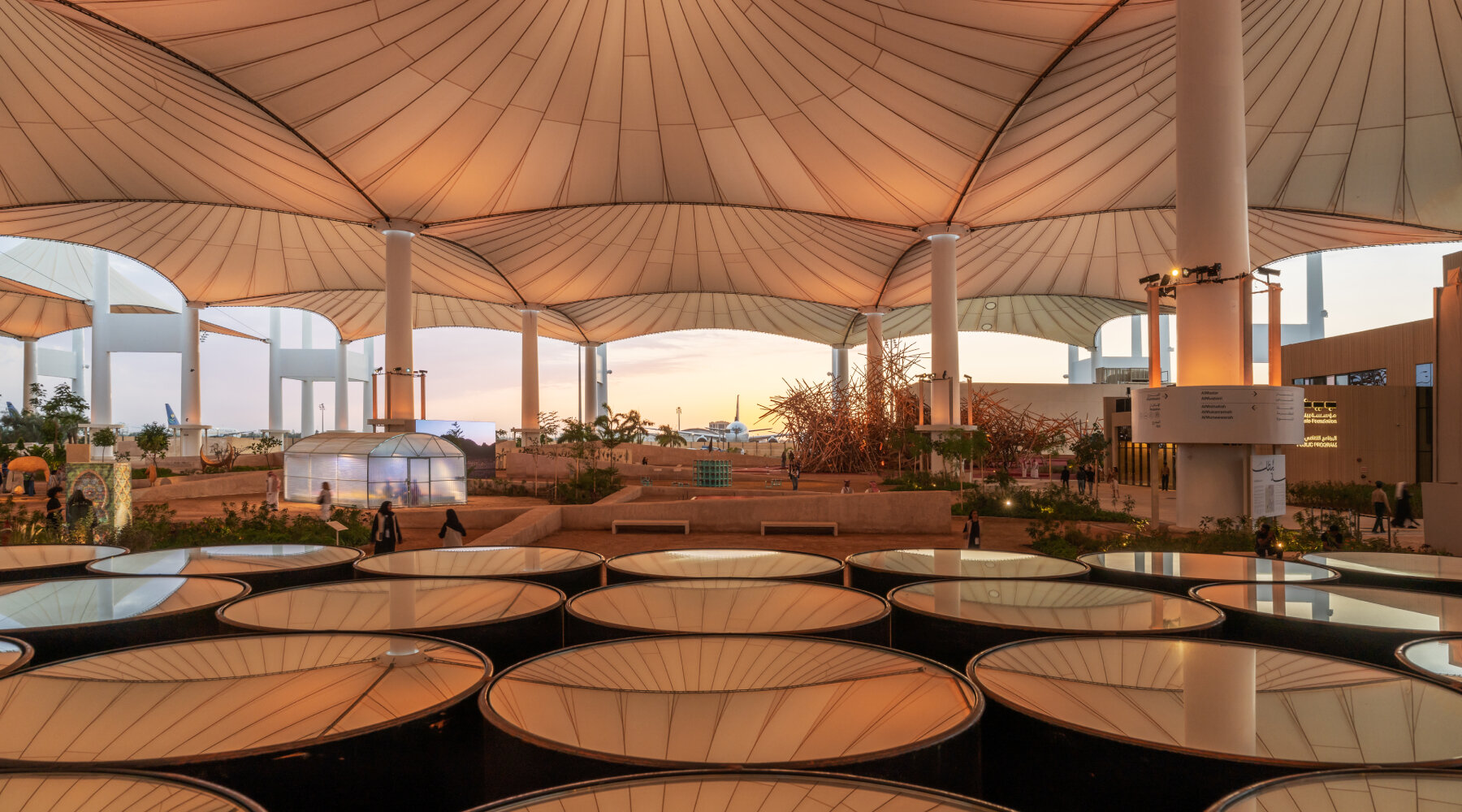
Barrels by Takashi Kuribayashi | image by Marco Cappelletti, courtesy of the Diriyah Biennale Foundation
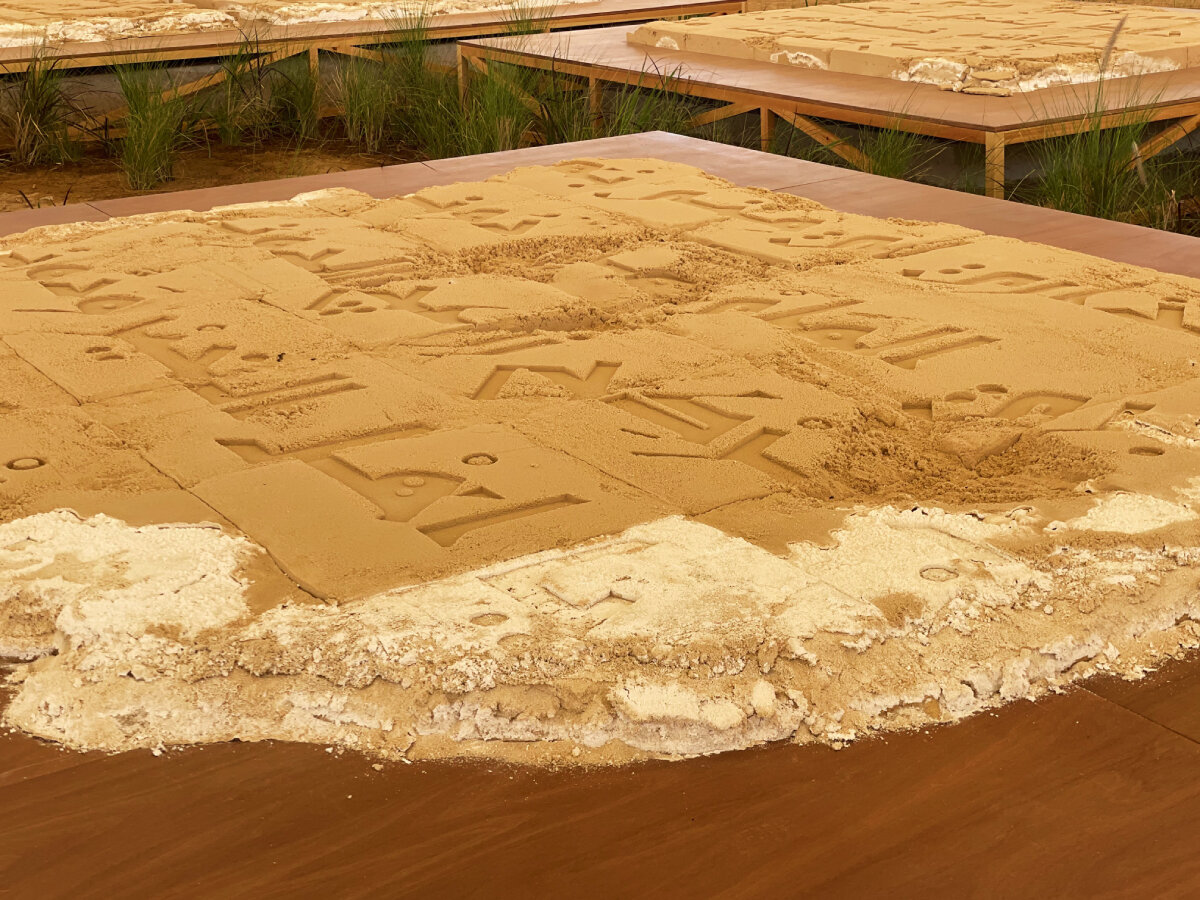
Watering the distant, deserting the near by Nasser Alzayani | image © designboom
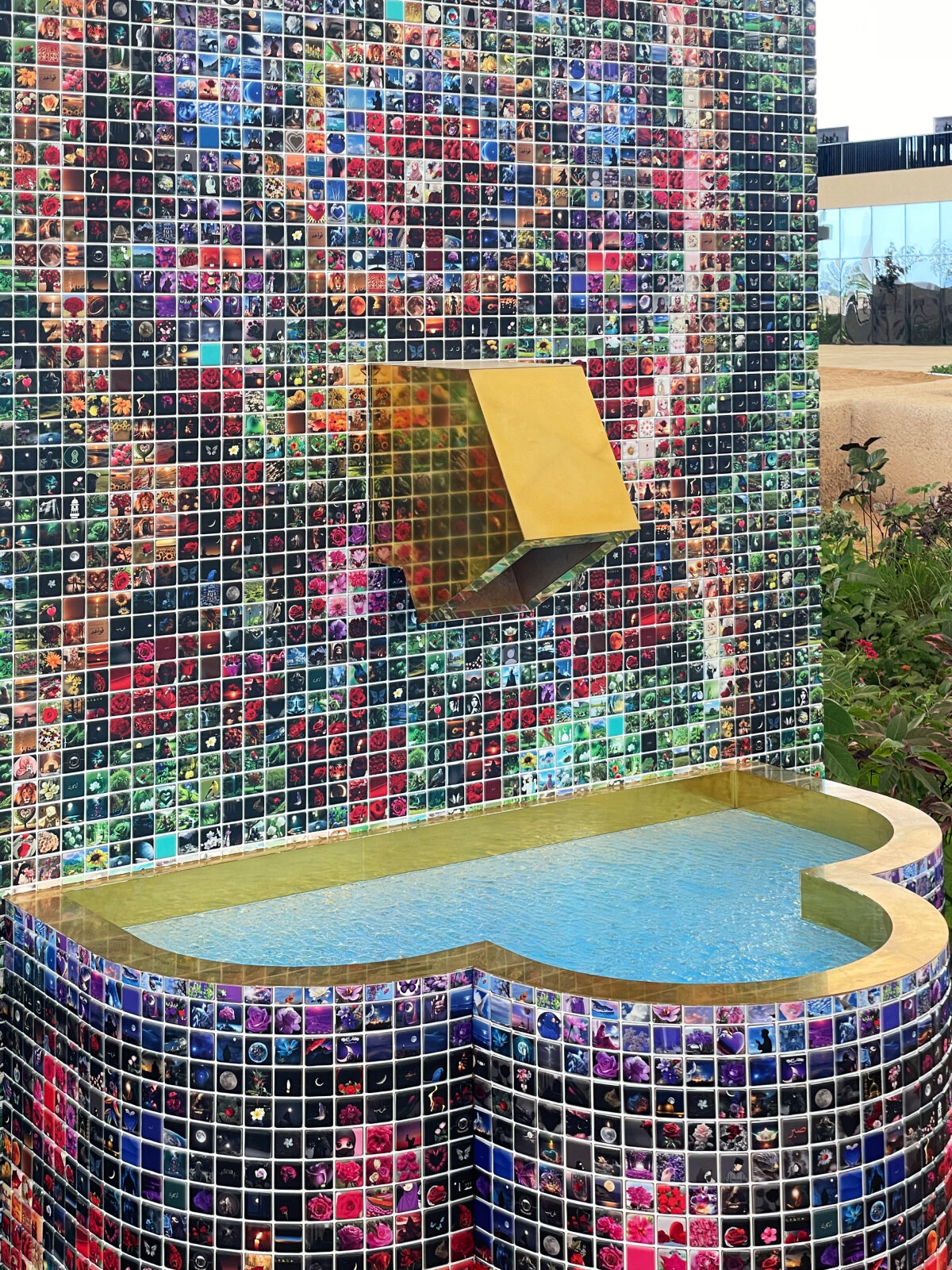
Media Fountain by Anhar Salem | image © designboom
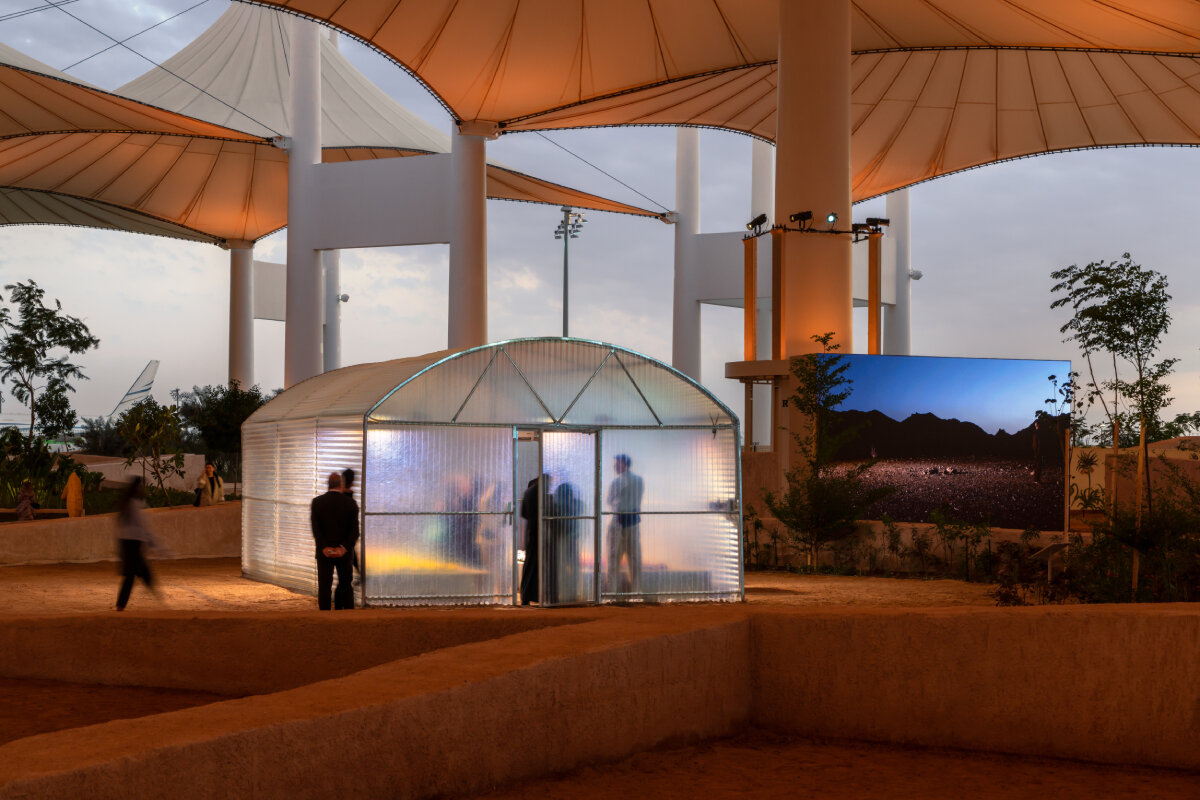
Cut Flowers by Ala Younis (left) and What I heard in the valley by Bilal Allaf | image by Marco Cappelletti
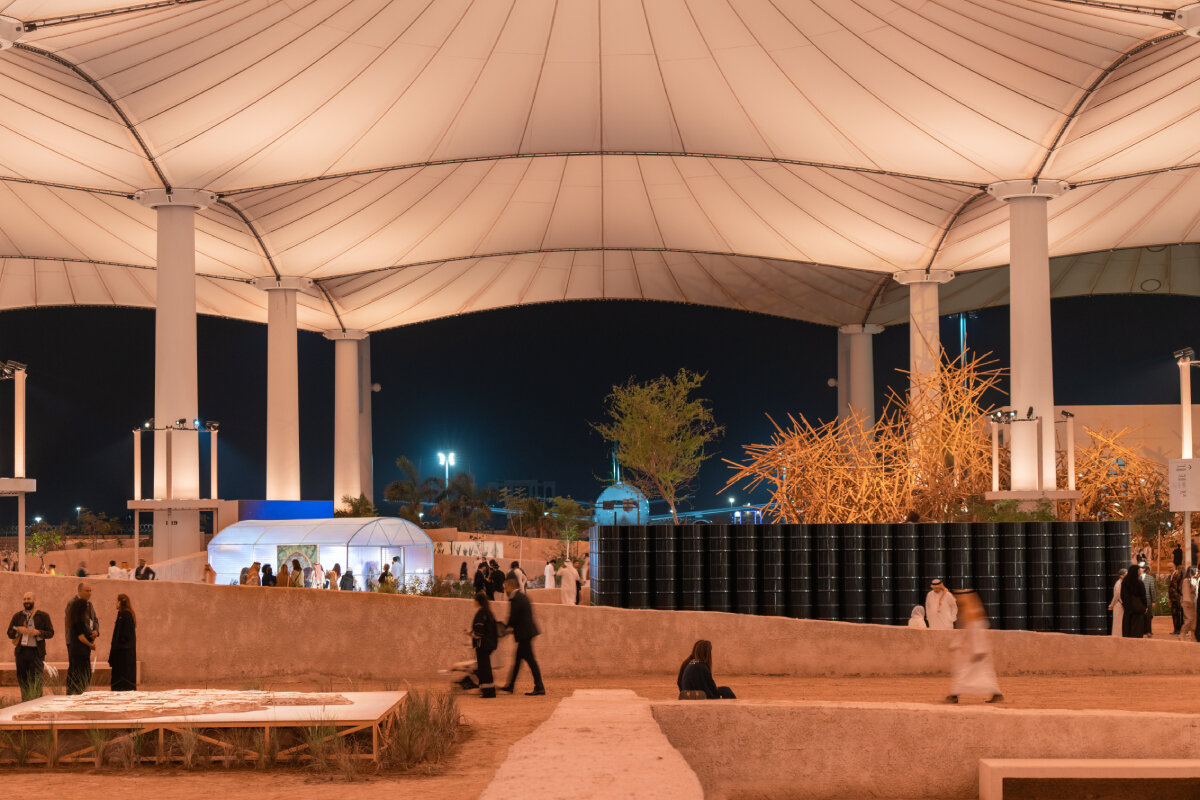
image by Marco Cappelletti, courtesy of the Diriyah Biennale Foundation
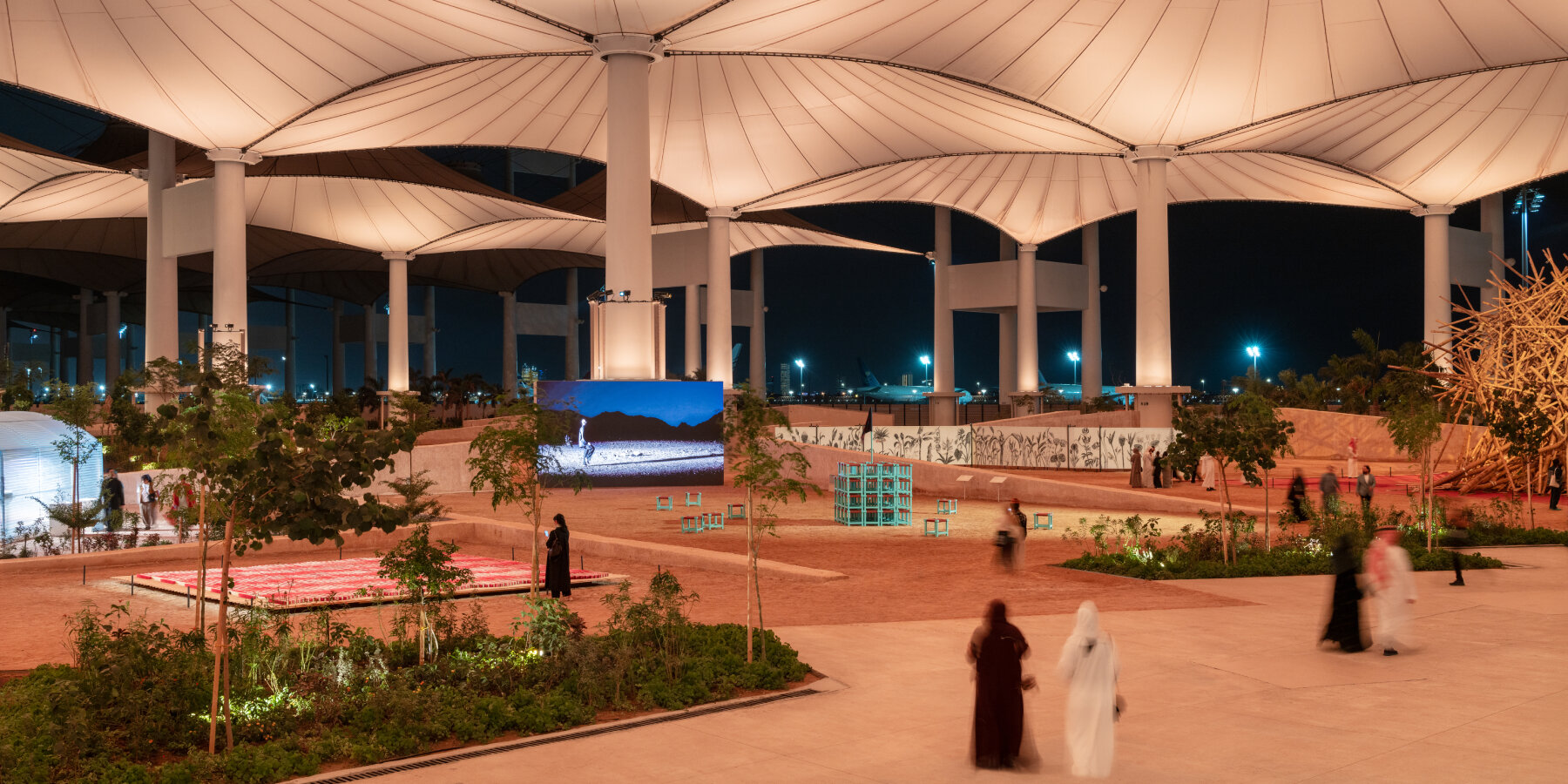
image by Marco Cappelletti, courtesy of the Diriyah Biennale Foundation
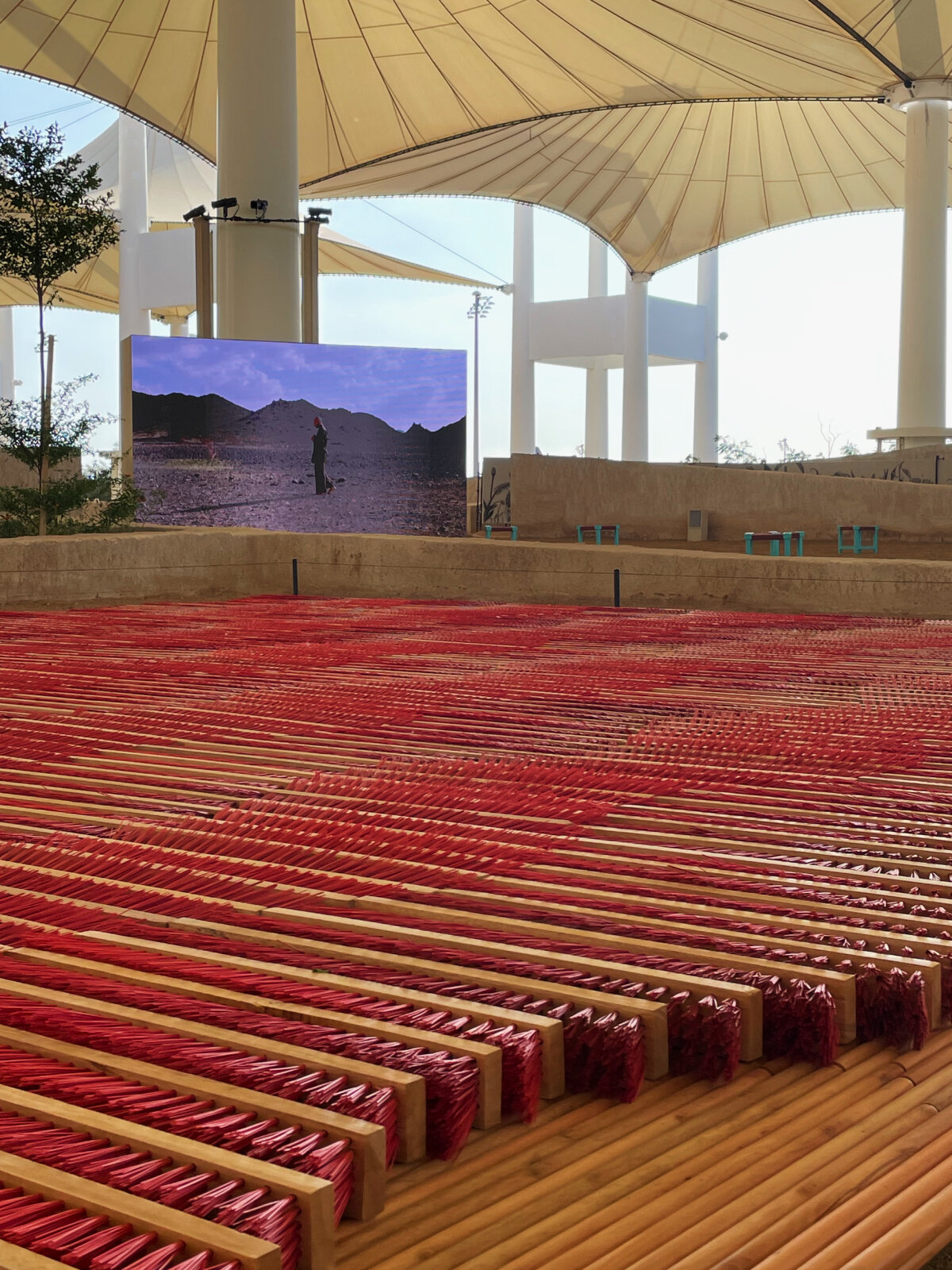
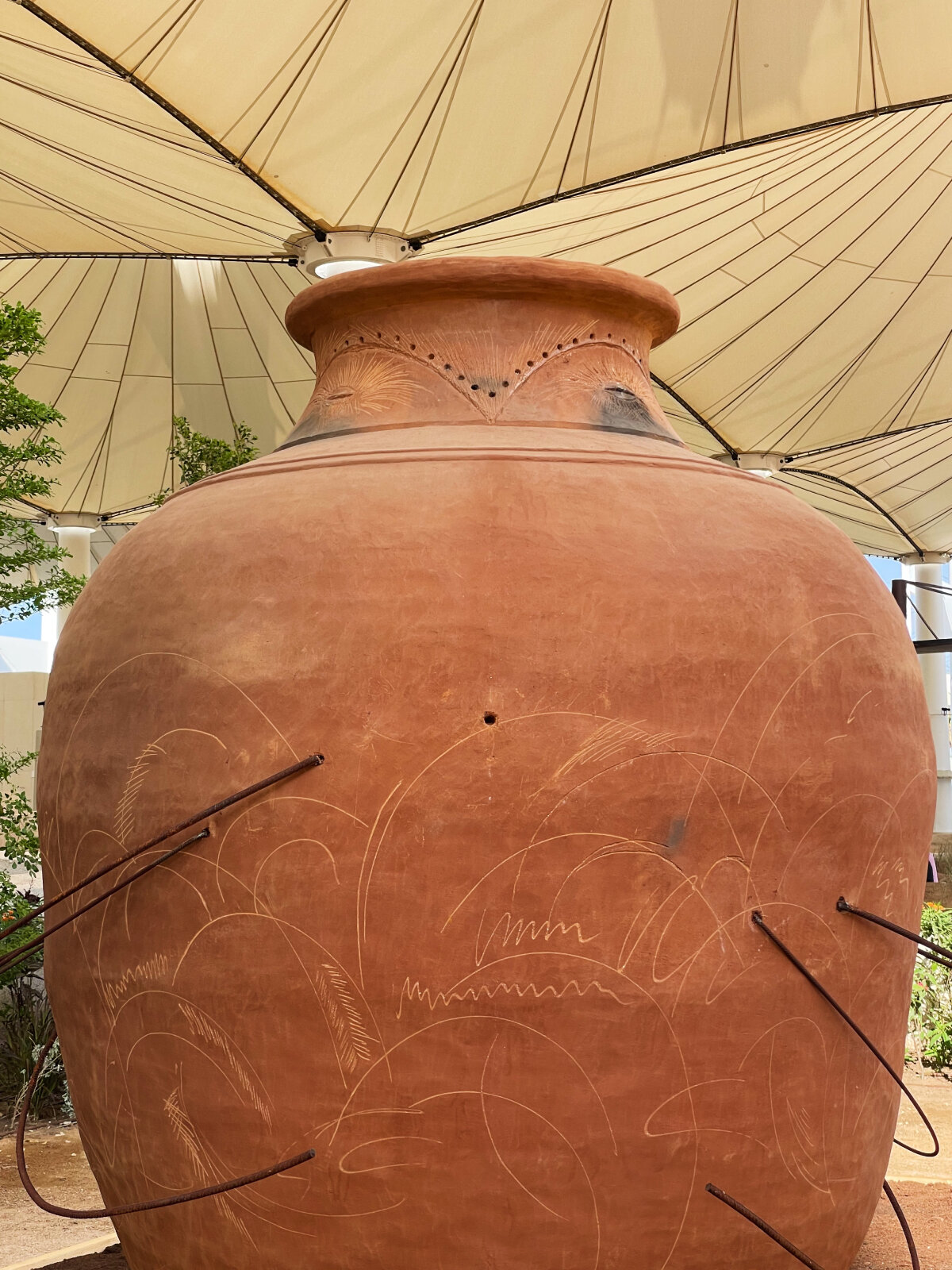
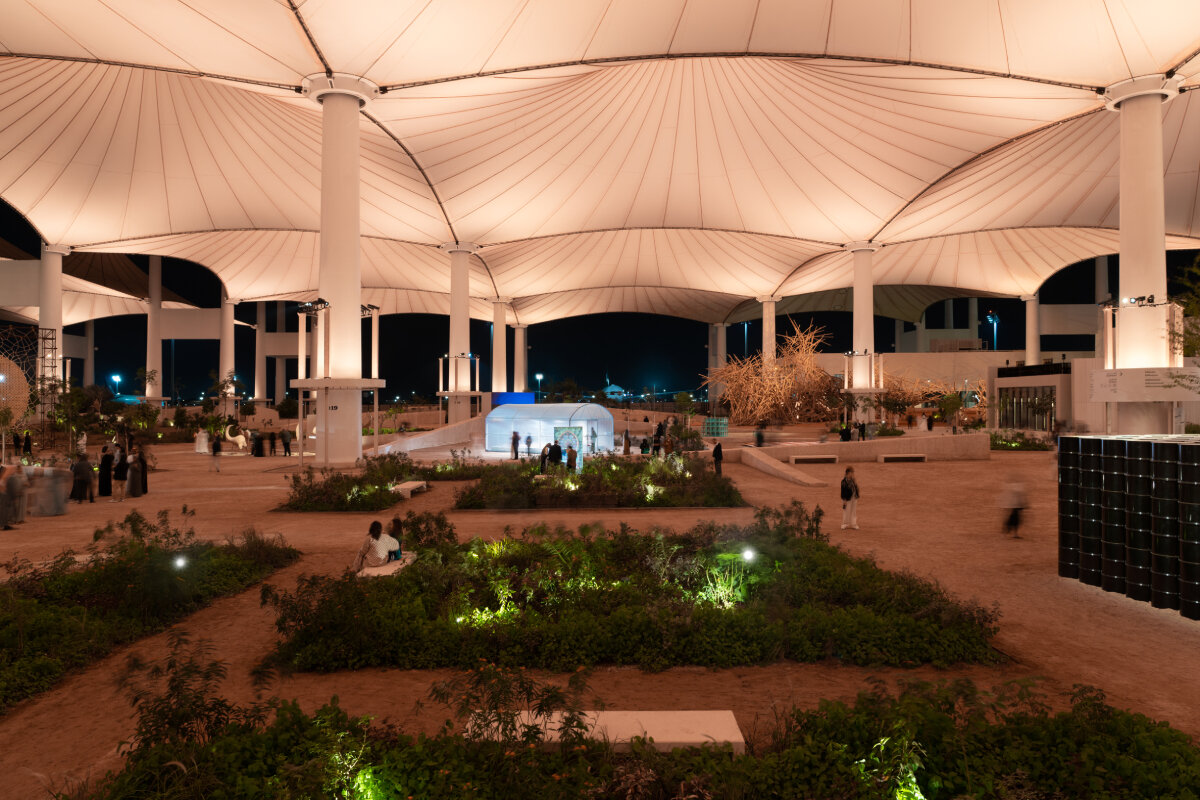
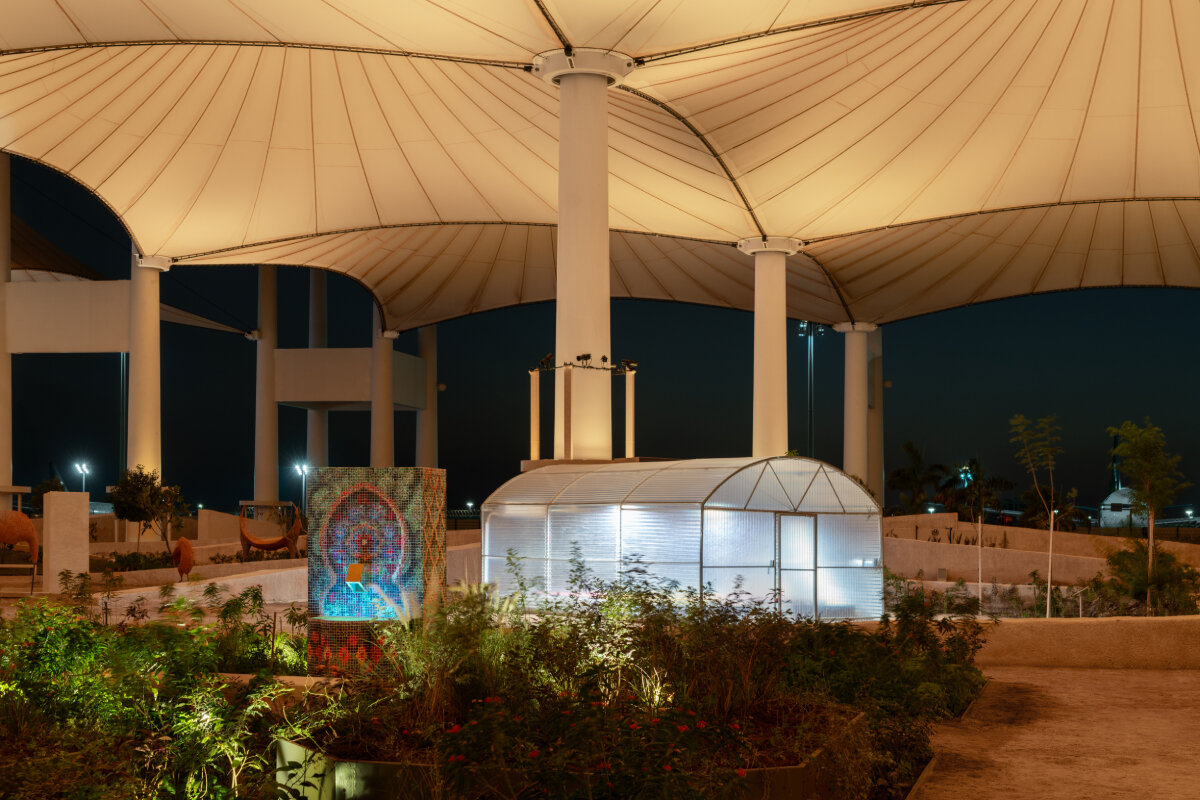
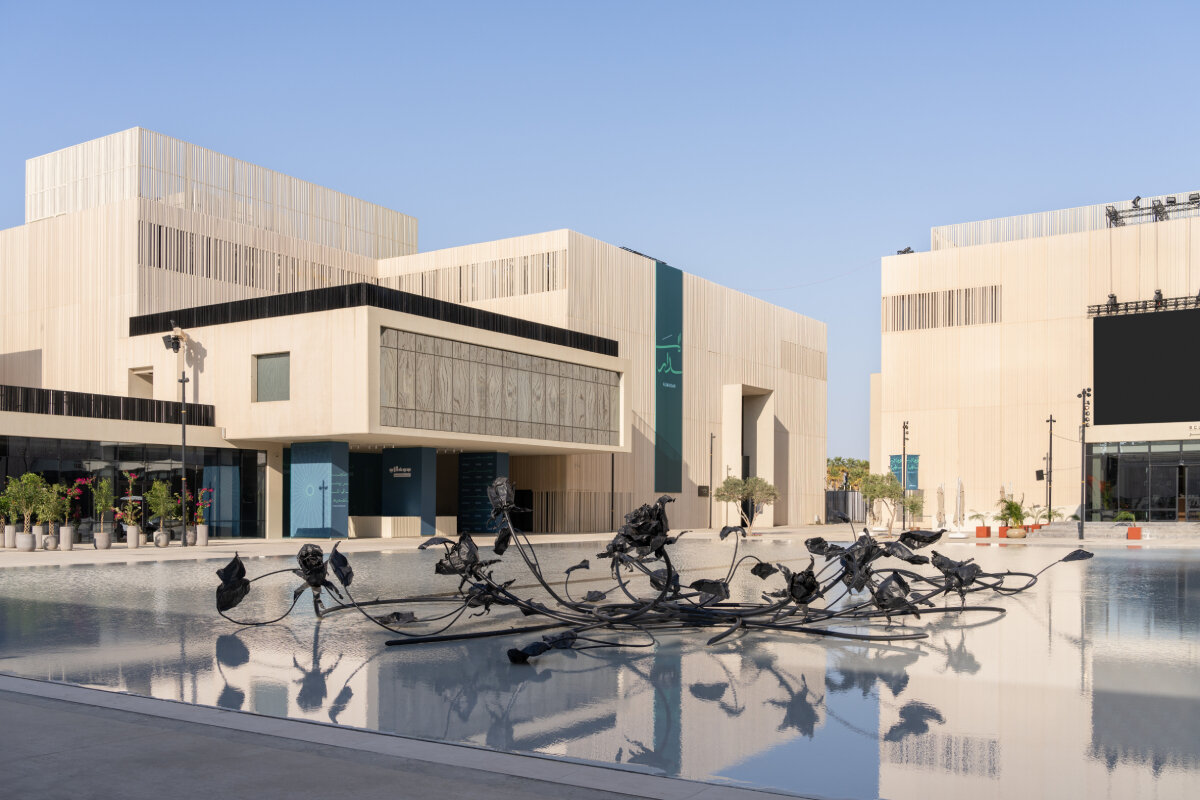
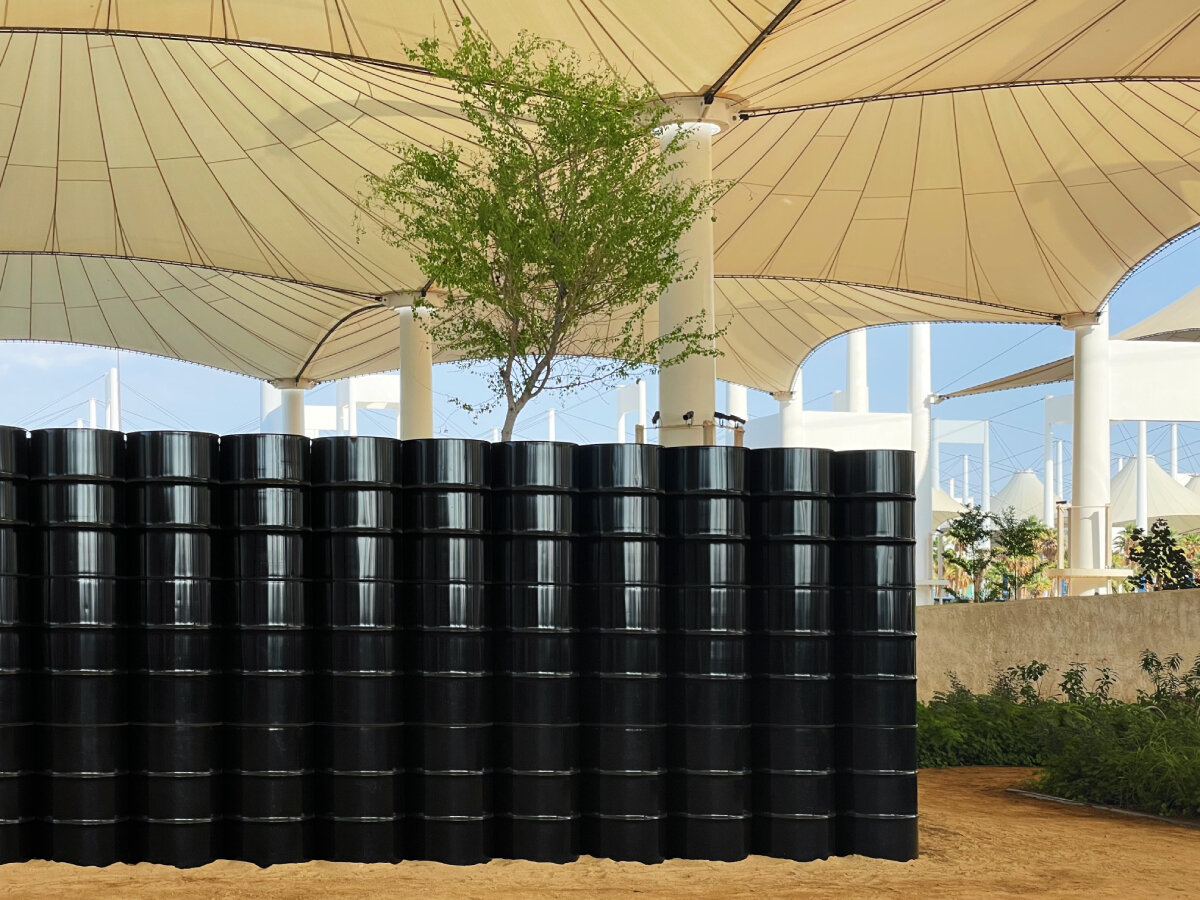
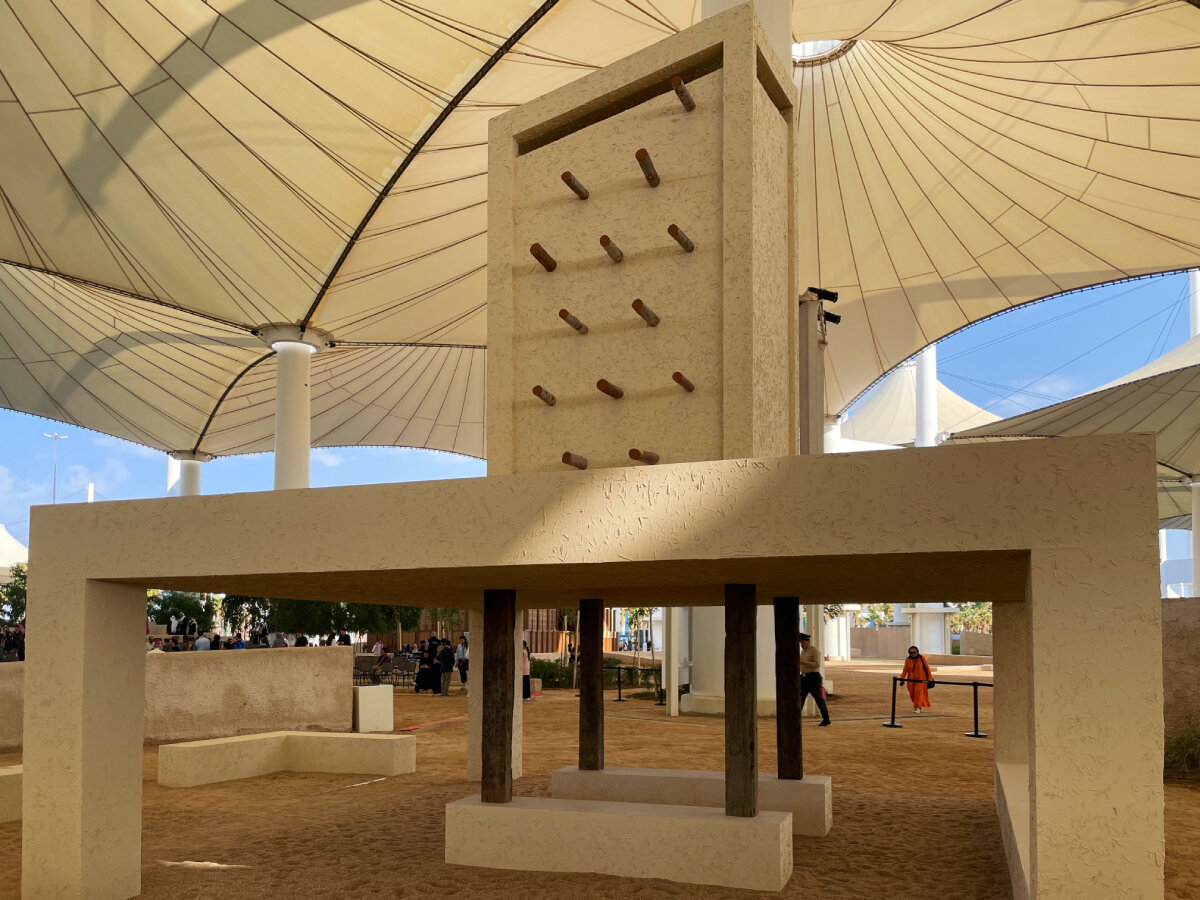
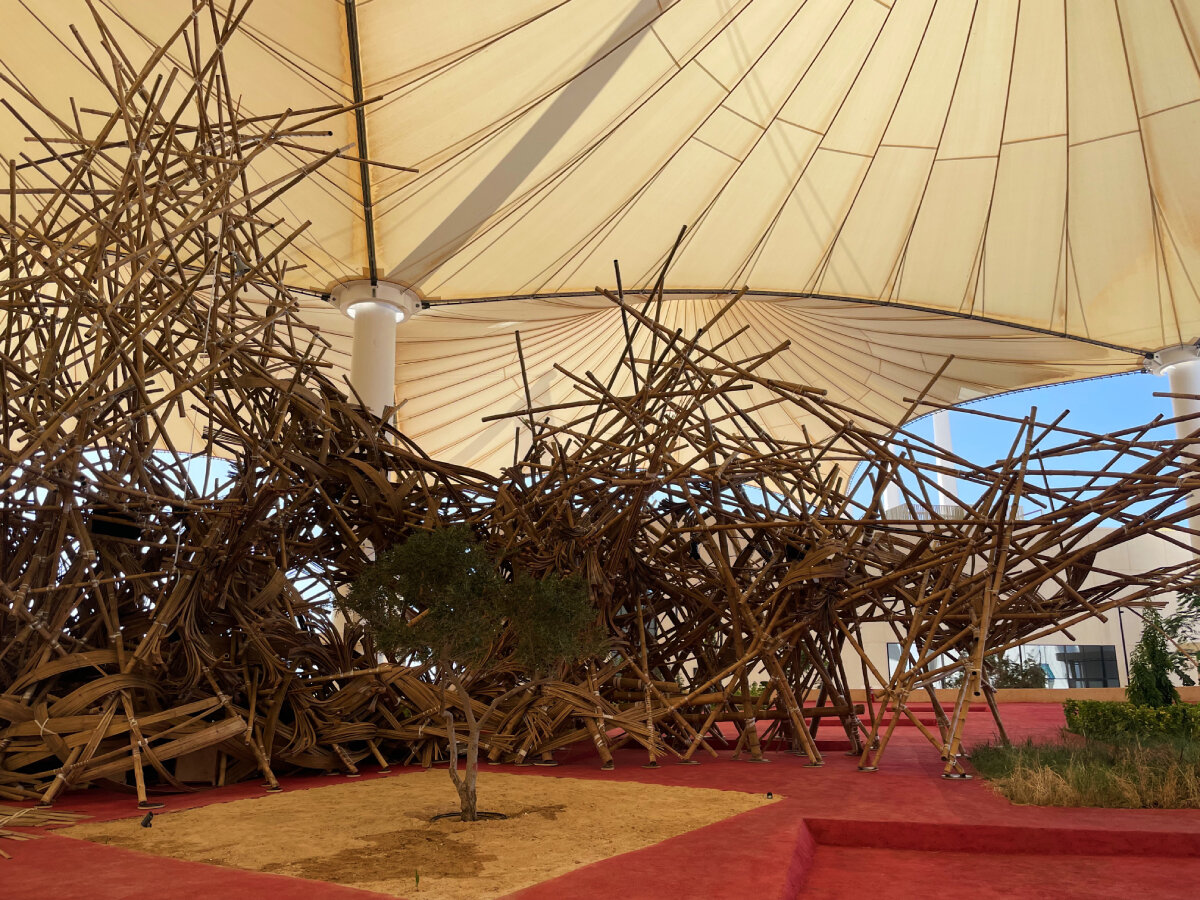
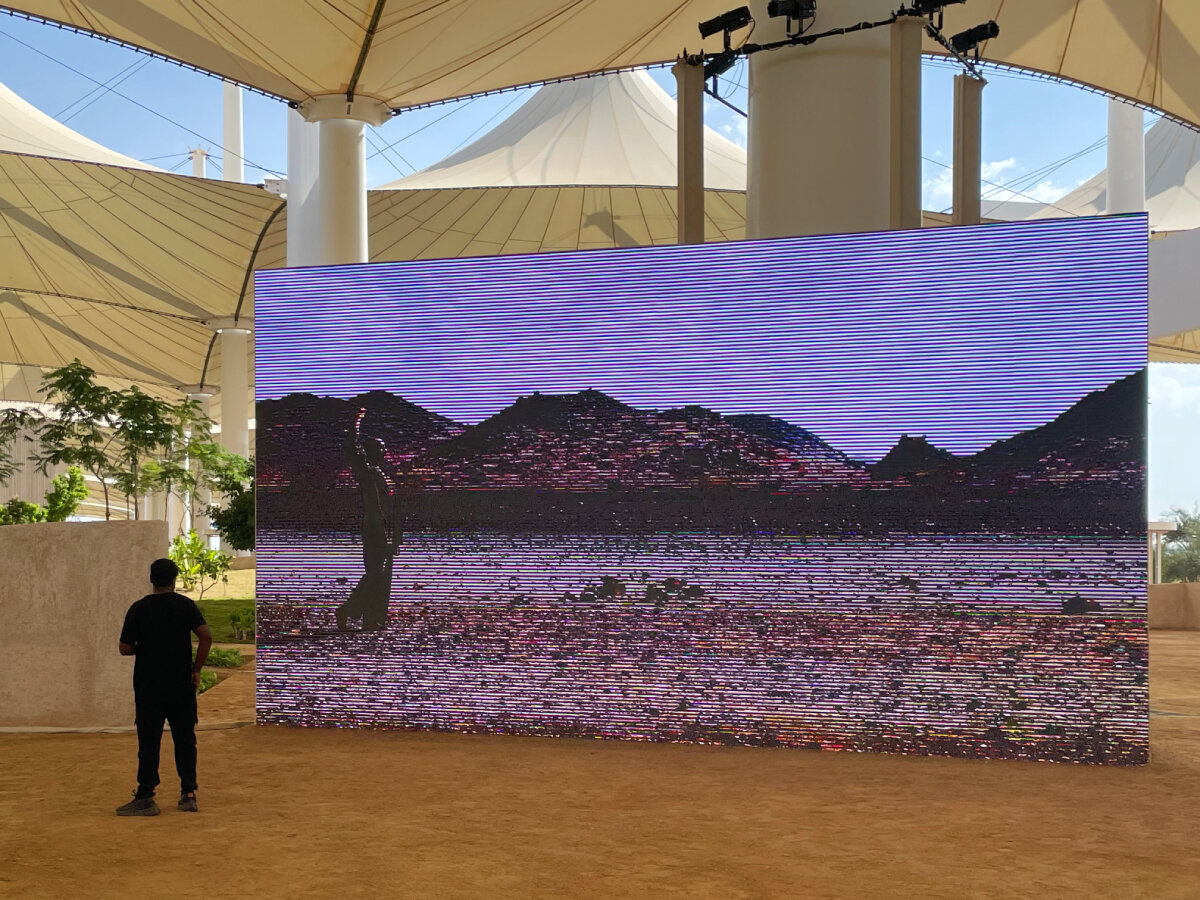
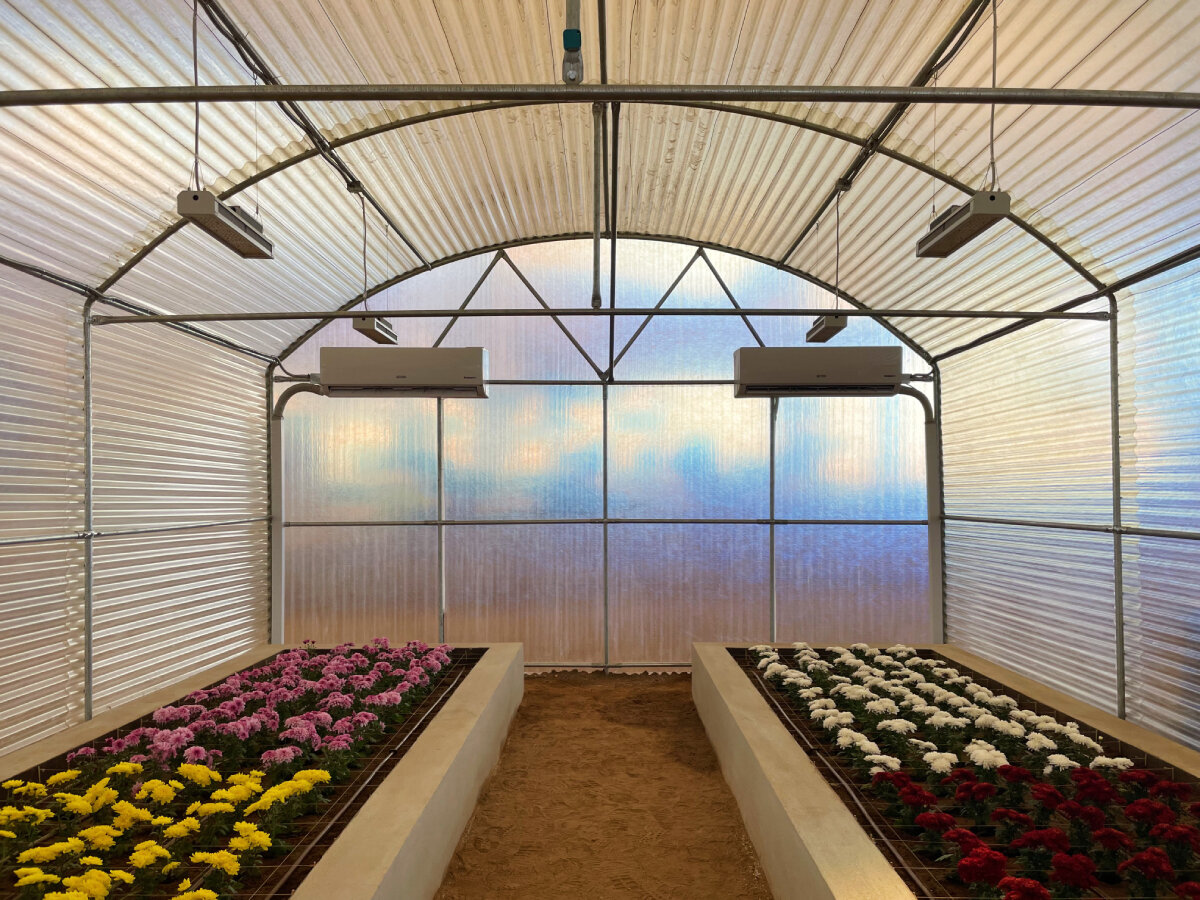
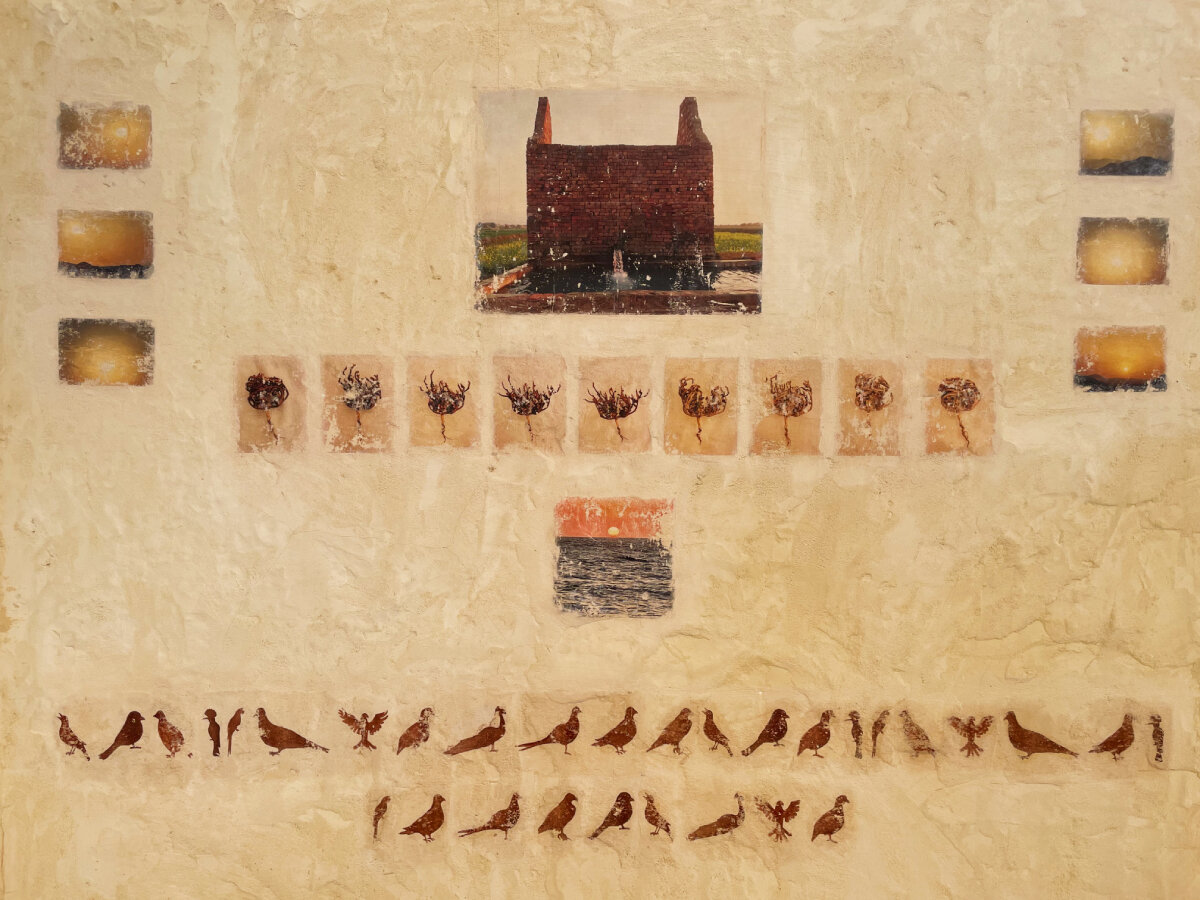
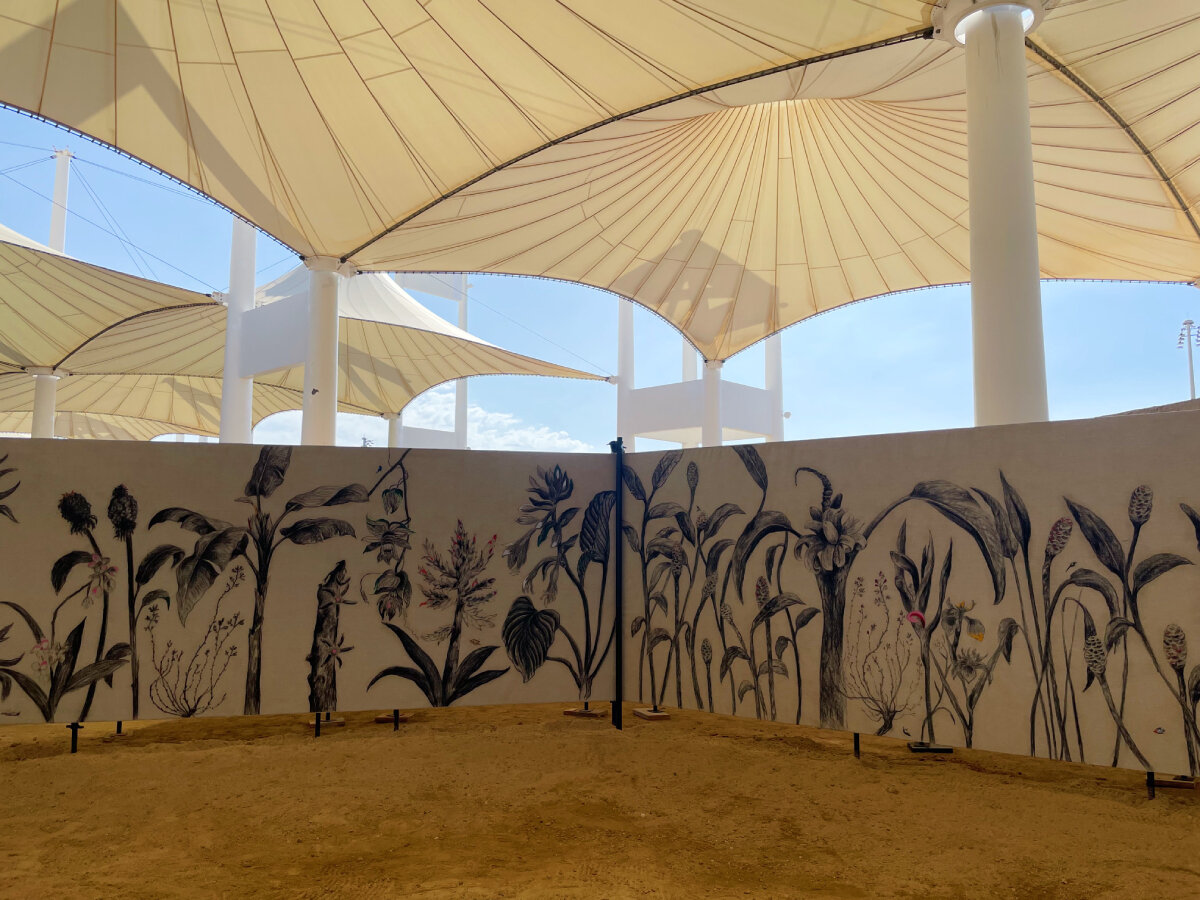
project info:
event: Islamic Arts Biennale 2025
on view: January 25th — May 25th, 2025
location: King Abdulaziz International Airport, Jeddah, Saudi Arabia
artistic directors: Julian Raby, Amin Jaffer, Abdul Rahman Azzam
curator of contemporary art: Muhannad Shono
organizer: Diriyah Biennale Foundation | @biennale_sa
